Shuangquan Feng
One-Frame Calibration with Siamese Network in Facial Action Unit Recognition
Aug 30, 2024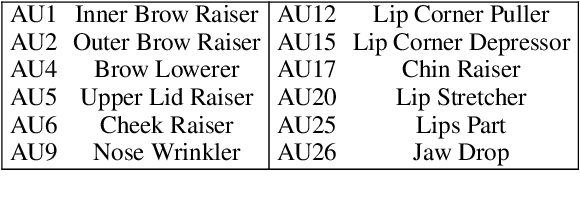

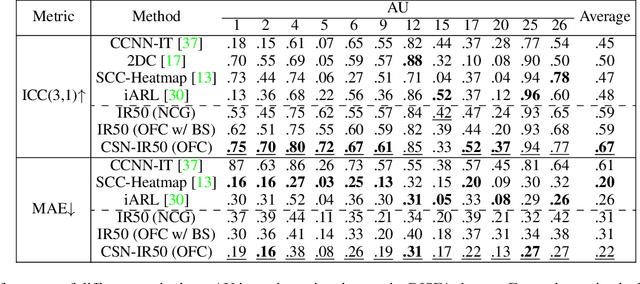
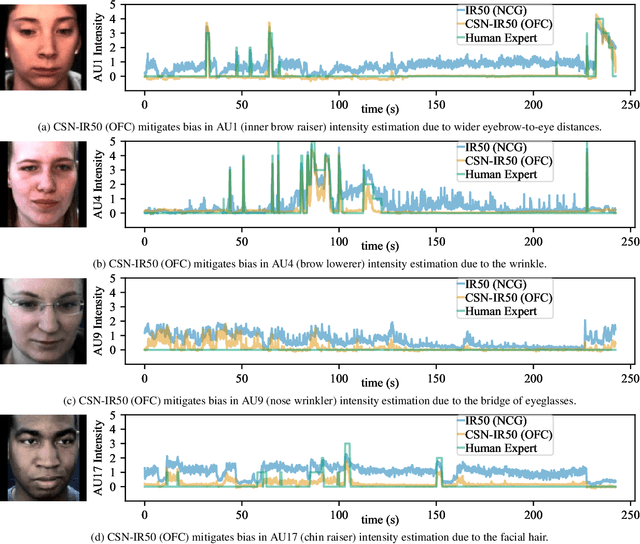
Abstract:Automatic facial action unit (AU) recognition is used widely in facial expression analysis. Most existing AU recognition systems aim for cross-participant non-calibrated generalization (NCG) to unseen faces without further calibration. However, due to the diversity of facial attributes across different identities, accurately inferring AU activation from single images of an unseen face is sometimes infeasible, even for human experts -- it is crucial to first understand how the face appears in its neutral expression, or significant bias may be incurred. Therefore, we propose to perform one-frame calibration (OFC) in AU recognition: for each face, a single image of its neutral expression is used as the reference image for calibration. With this strategy, we develop a Calibrating Siamese Network (CSN) for AU recognition and demonstrate its remarkable effectiveness with a simple iResNet-50 (IR50) backbone. On the DISFA, DISFA+, and UNBC-McMaster datasets, we show that our OFC CSN-IR50 model (a) substantially improves the performance of IR50 by mitigating facial attribute biases (including biases due to wrinkles, eyebrow positions, facial hair, etc.), (b) substantially outperforms the naive OFC method of baseline subtraction as well as (c) a fine-tuned version of this naive OFC method, and (d) also outperforms state-of-the-art NCG models for both AU intensity estimation and AU detection.
FERGI: Automatic Annotation of User Preferences for Text-to-Image Generation from Spontaneous Facial Expression Reaction
Dec 05, 2023Abstract:Researchers have proposed to use data of human preference feedback to fine-tune text-to-image generative models. However, the scalability of human feedback collection has been limited by its reliance on manual annotation. Therefore, we develop and test a method to automatically annotate user preferences from their spontaneous facial expression reaction to the generated images. We collect a dataset of Facial Expression Reaction to Generated Images (FERGI) and show that the activations of multiple facial action units (AUs) are highly correlated with user evaluations of the generated images. Specifically, AU4 (brow lowerer) is most consistently reflective of negative evaluations of the generated image. This can be useful in two ways. Firstly, we can automatically annotate user preferences between image pairs with substantial difference in AU4 responses to them with an accuracy significantly outperforming state-of-the-art scoring models. Secondly, directly integrating the AU4 responses with the scoring models improves their consistency with human preferences. Additionally, the AU4 response best reflects the user's evaluation of the image fidelity, making it complementary to the state-of-the-art scoring models, which are generally better at reflecting image-text alignment. Finally, this method of automatic annotation with facial expression analysis can be potentially generalized to other generation tasks. The code is available at https://github.com/ShuangquanFeng/FERGI, and the dataset is also available at the same link for research purposes.
Spectrally Adaptive Common Spatial Patterns
Feb 09, 2022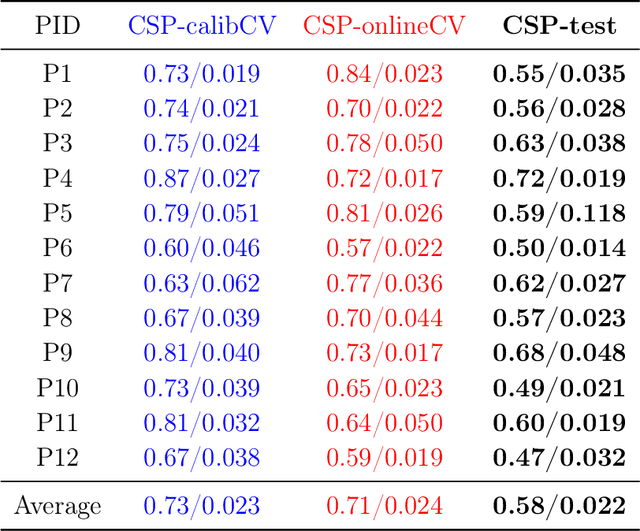
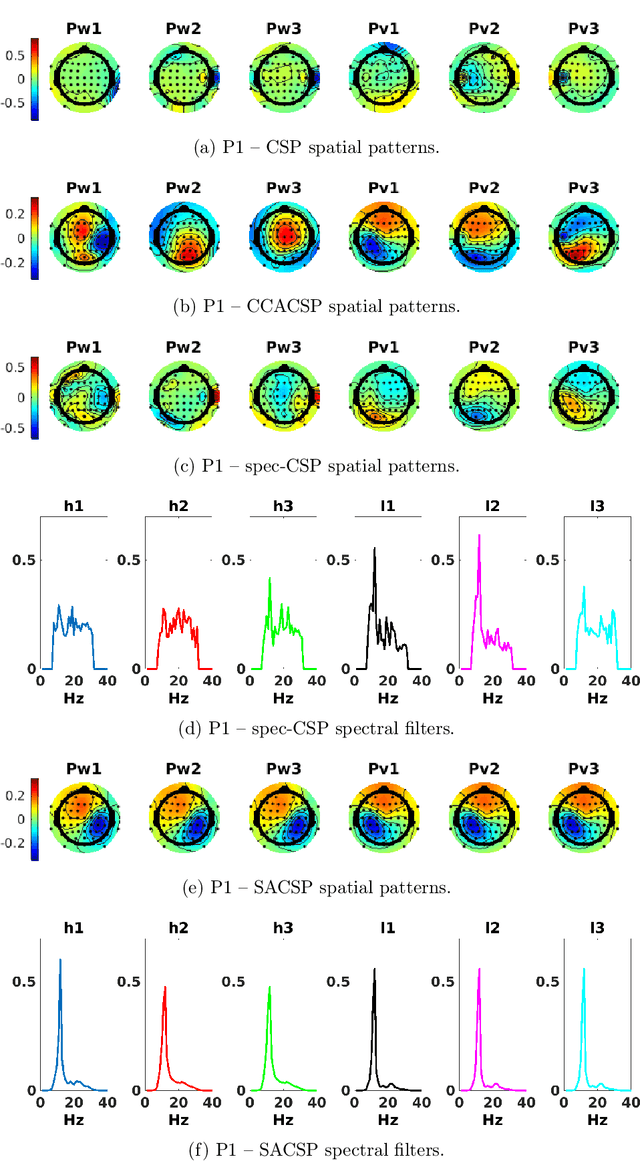
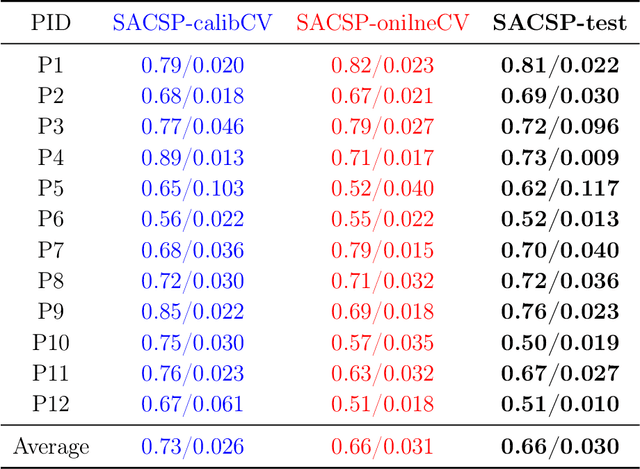
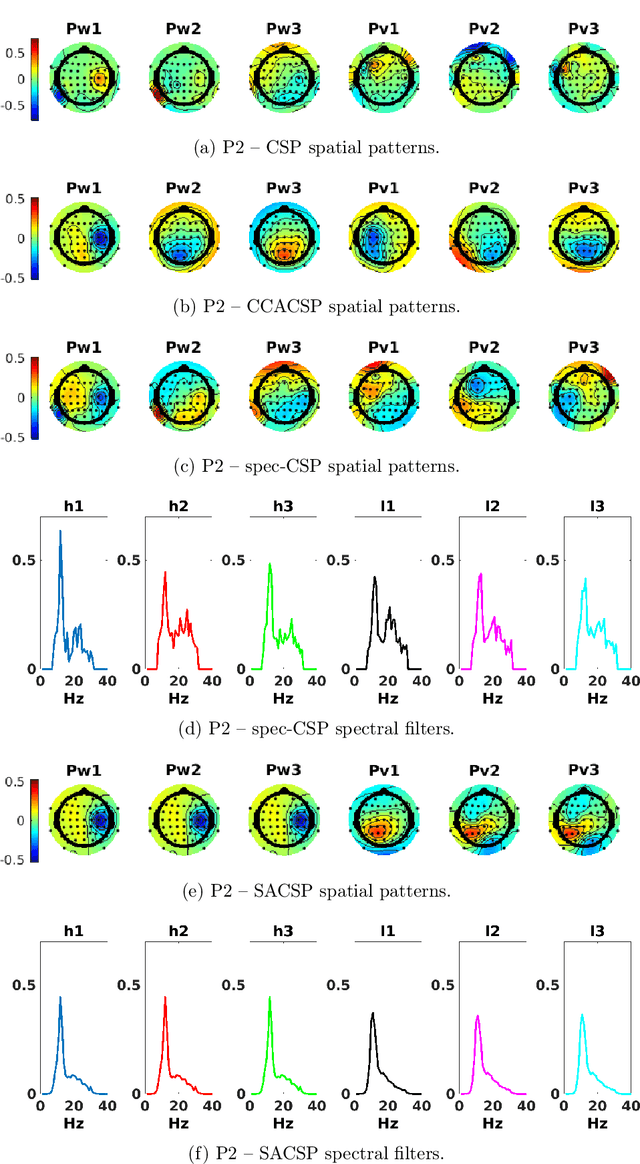
Abstract:The method of Common Spatial Patterns (CSP) is widely used for feature extraction of electroencephalography (EEG) data, such as in motor imagery brain-computer interface (BCI) systems. It is a data-driven method estimating a set of spatial filters so that the power of the filtered EEG signal is maximized for one motor imagery class and minimized for the other. This method, however, is prone to overfitting and is known to suffer from poor generalization especially with limited calibration data. Additionally, due to the high heterogeneity in brain data and the non-stationarity of brain activity, CSP is usually trained for each user separately resulting in long calibration sessions or frequent re-calibrations that are tiring for the user. In this work, we propose a novel algorithm called Spectrally Adaptive Common Spatial Patterns (SACSP) that improves CSP by learning a temporal/spectral filter for each spatial filter so that the spatial filters are concentrated on the most relevant temporal frequencies for each user. We show the efficacy of SACSP in providing better generalizability and higher classification accuracy from calibration to online control compared to existing methods. Furthermore, we show that SACSP provides neurophysiologically relevant information about the temporal frequencies of the filtered signals. Our results highlight the differences in the motor imagery signal among BCI users as well as spectral differences in the signals generated for each class, and show the importance of learning robust user-specific features in a data-driven manner.
 Add to Chrome
Add to Chrome Add to Firefox
Add to Firefox Add to Edge
Add to Edge